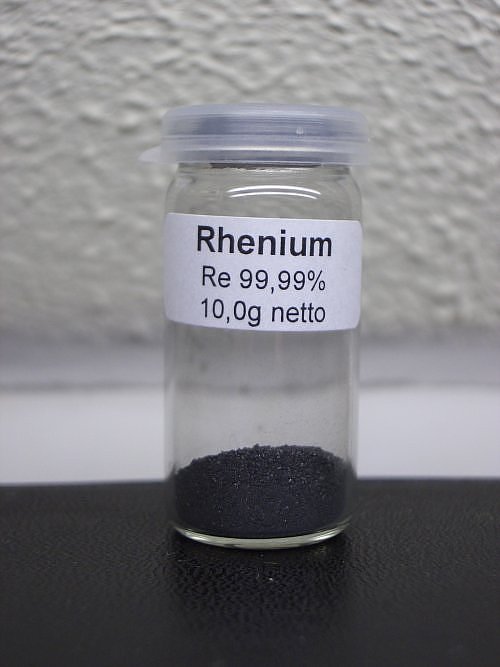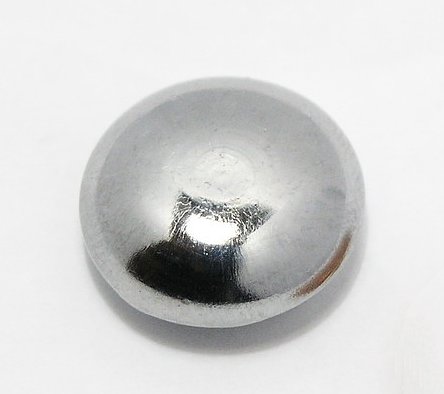


Rhenium
 Rhenium is a bluish silvery metal
in the bulk state and a black powder, when finely divided. It only vaguely
resembles manganese. It is in the same group as manganese, but its properties
are quite different. As with all the heavier transition metals, rhenium also is
much less reactive than its lighter congener manganese. Rhenium, however, can be dissolved easily in
oxidizing dilute acids (e.g. nitric acid, hydrochloric acid with hydrogen
peroxide) and in bromine water. Non-oxidizing acids do not attack the metal.
Rhenium is a bluish silvery metal
in the bulk state and a black powder, when finely divided. It only vaguely
resembles manganese. It is in the same group as manganese, but its properties
are quite different. As with all the heavier transition metals, rhenium also is
much less reactive than its lighter congener manganese. Rhenium, however, can be dissolved easily in
oxidizing dilute acids (e.g. nitric acid, hydrochloric acid with hydrogen
peroxide) and in bromine water. Non-oxidizing acids do not attack the metal.
Rhenium, like manganese, has highest oxidation state +7. Where manganese is strongly oxidizing in its +7 oxidation state, rhenium only is mildly oxidizing at this oxidation state. This is a trend, similar for all transition metals. The heavier metals favor high oxidation states, while the lightest metals favor low to medium oxidation states.
Rhenium has no aqueous chemistry at the +2 oxidation state. The lowest attainable oxidation state is +3, which is mildly reducing. Rhenium in its +3 oxidation state has the remarkable property, that it easily forms metal-metal bonds, and complexes with multiple rhenium atoms in a single ion are much more stable against oxidation than the simple Re3+(aq) ion.
Although rhenium is an interesting element, it unfortunately is quite expensive. This element is available on eBay in many quantities in the form of 'drops', bars and powder. Its price is from $5 to $20 per gram, depending on purity, polish, etc.
 A
nice example of such a 'drop' is shown here. It is from an eBay auction. This
nicely shows how lustrous the metal can be, this in marked contrast to the black
color of the sample I have. The powdered material, however, is much more
suitable for chemical experiments.
A
nice example of such a 'drop' is shown here. It is from an eBay auction. This
nicely shows how lustrous the metal can be, this in marked contrast to the black
color of the sample I have. The powdered material, however, is much more
suitable for chemical experiments.
The sample shown here has a diameter of 12 mm and has a weight of 17 grams.